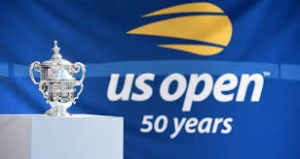By Cliff Richey
Cliff Richey is a two-time US Open semifinalist, former No. 1-ranked U.S. professional player and a member of two U.S. Davis Cup title-winning teams. He is the author of the book “Acing Depression: A Tennis Champion’s Toughest Match” (for sale here: http://www.amazon.com/dp/0942257669/ref=cm_sw_r_tw_dp_tkO7ub12ZR5W7 ) that documents his life with clinical depression and his constant fight to overcome it. His follow-up book on mental health “Your Playbook for Beating Depression: Essential Strategies for Managing and Living With Depression” was written with Dr. Mary Garrison and is available here https://www.amazon.com/dp/1937559688/ref=cm_sw_r_tw_dp_U_x_F0PRBb69N9YJP
As we look back in the rear view mirror on an amazing, recently-completed U.S. Open Tennis Championships in New York that celebrated the 50 years of when the event went “Open” in 1968, my sister Nancy Richey and I couldn’t help but chuckle to ourselves that it was actually the 49th year of truly “Open Tennis.”
Nancy and I grew up with a dad who was a teaching professional and tennis was our life. We dreamed of one day being professional tennis players. When “open” tennis made it’s debut on the world tour, we felt our day had arrived. We could finally become touring pros, win prize money and sign nice endorsement contracts. Instead of receiving under the table payments that made us “shamateurs,” we could now be respected playing professionals…or so we thought.
In the first weeks of “open” tennis, Nancy entered the tennis record books as the first woman to win a Grand Slam tournament singles title in the “Open” Era when she won the French Open in 1968, beating Billie Jean King in the semifinals and Ann Jones in the final. However, it was Jones who received the first-prize champion’s check at that first French Open. My sister, the true champion, got a few bucks to help defray her expenses. Nancy wanted to play for the prize money but was not allowed to by our national governing body, the United States Lawn Tennis Association, the modern-day USTA.
As the tour moved to England, the Queens Club event was also “open” for the first time ever. Tom Okker of Holland and American Clark Graebner were the men’s finalists. After a rain out, they were declared co-champions. Was the ride money split between the two? No! Tom Okker got it all. Graebner got a few quid expense money. Were American players choosing to remain amateurs? Hardly…they were forced to.
It was a bit of discrimination imposed against American players by the USTA and it continued through the summer of 1968. It was an uncertain time in the history of the game, bridging from the old amateur game and the new pro game and there wasn’t a certainty that this new era would work. It just shows what kind of control that a nation’s governing body had over players from their country at the time. Later in the year, the USTA banned me from playing in the South American Championships in Buenos Aires, where I was the two-time defending champion! All of this reared its ugly head later in 1973 with the men’s player boycott of Wimbledon and the founding of the ATP as a men’s player’s union and also with the founding of the WTA Tour for the women.
As the U.S. Championships at Forest Hills loomed at the end of the summer of 1968, all of us were hopeful that the ban would be lifted…and the USTA would be staging their newly-named US Open as just that…Open! Our governing body, who had denied us the right of being pros at the French Open, Queens Club and Wimbledon, seemed ready to join the rest of the world. The 1968 first U.S. “Open” professional event would have a $100,000 total purse. The men’s singles first prize was $14,000…WOW. As the historic tournament approached, our hopes were suddenly dashed. The USTA announced that American players could not play for prize money; the rule would stay in effect through years end. Arthur Ashe beat Tom Okker to win the inaugural men’s singles final and become the first U.S. “Open” champion. Okker got the $14,000 first prize money, Arthur got a thank you and famously $20 per day in expense money. His military status had no bearing on the rule barring U.S. players accepting money.
Why were the American players shut out? You would have to ask the officials from the USLTA at the time. Playing as an amateur or a pro at the U.S. Open by definition should have been the players choice. The 1968 event at Forest Hills could be called the U.S. Open…for some. And was it truly the first? It actually is a stretch. We all saw the wonderful heavily advertised anniversary celebration this year. But was it really the 50th? To Nancy and I – and for those as well who also played and remembered – 1969 to 2018 looks more like 49 years to us!

